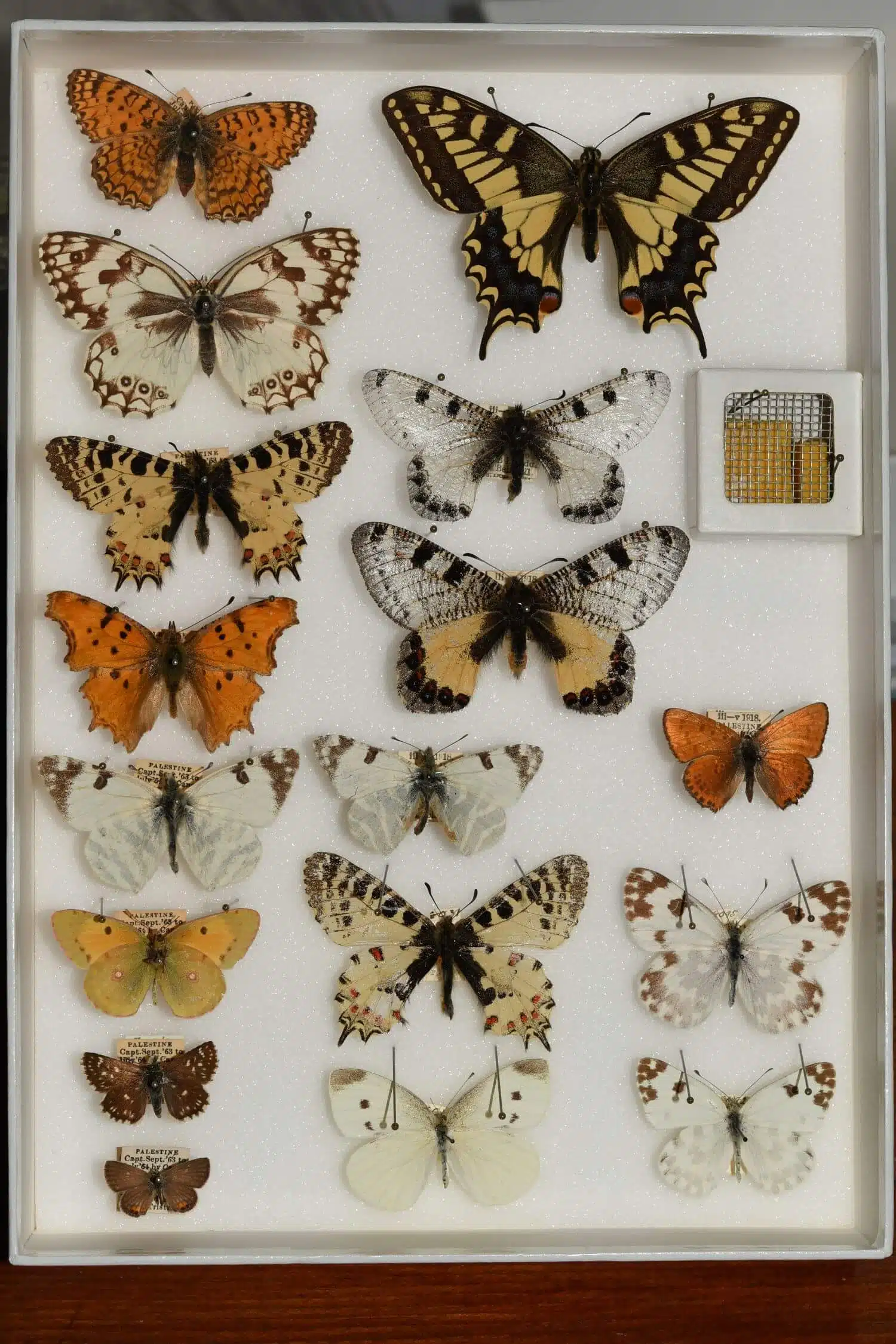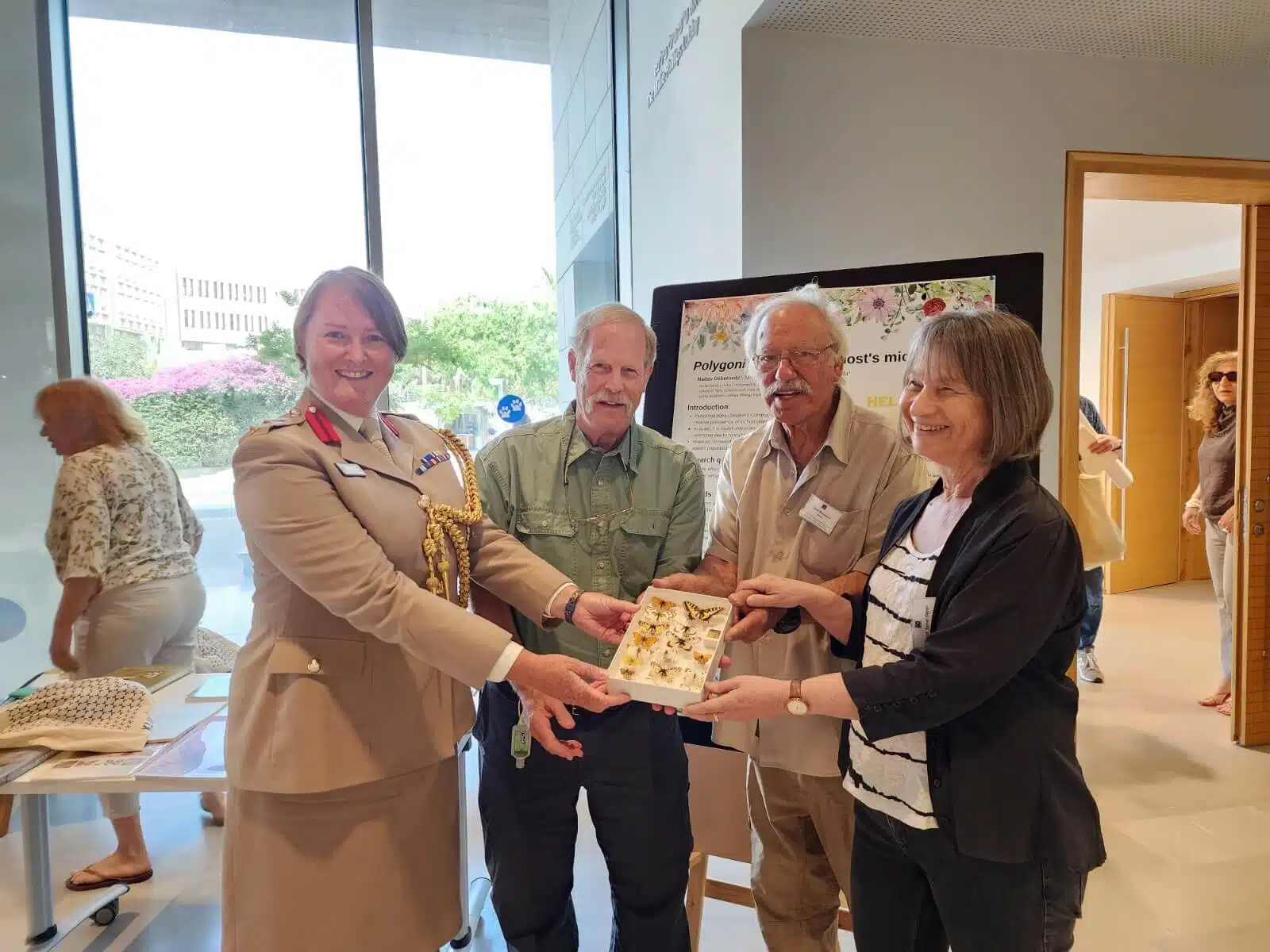The box contains dried butterflies that were collected in the Land of Israel between 1863-1865 by delegations of the Anglican Church and have now been donated to the Steinhart Museum of Nature at Tel Aviv University

On Thursday (June 1.6.2023, XNUMX), it was held at the Steinhardt Museum of Nature, Tel Aviv University, The fourth international congress of the butterflies of the Middle East led by the association of butterfly lovers in Israel. The first session of the congress discussed the contribution of the British to the study of the butterflies of Israel, and in the framework of it was awarded to the Museum of Nature at Tel Aviv University by the Museum of Nature at the University of Oxford Tristram-Cambridge butterfly box Collected in the Land of Israel (Turkish Palestine), between the years 1865-1863 for a world watch in the national nature collections at the Nature Museum in Tel Aviv.
The 160-year-old box of butterflies, whose items were collected by the Anglican Church's delegations to the Holy Land, was given to Prof. Tamar by Col. Joe Burgon, the military attaché of the British Embassy in Israel, and Dovi Binyamini, chairman of the Butterfly Enthusiasts Association in Israel Dayan, chairman of the Steinhardt Museum of Nature, Tel Aviv University.
The rare box of butterflies, the items in which were collected during the Ottoman rule in Israel by two delegations of the Anglican Church led by Henry Baker Tristram and Octavius Picard-Cambridge, which was preserved in the Natural History Museum in Oxford, was discovered by chance by Dobi Binyamini, chairman of the Butterfly Enthusiasts Association in Israel , which is celebrating its 40th anniversary.
Binyamini came to the museum in Oxford to see particularly large details of butterflies of the transparent tulip type, which he saw in the wild around Beer Sheva. This type of butterflies are mentioned as butterflies collected in the south of the Gaza Strip on the Sinai border in Major Graves' essay published in 1925 on the butterflies of Israel and Jordan, which contains a detailed list of 80 species of butterflies, collected by 14 entomologists, most of them officers in the British Mandate service, who then ruled the Land of Israel.
Benjamin says that during his visit to the Natural History Museum in Oxford, he suddenly saw a strange note on one of the details: "Tristram-Cambridge 1863 - 1865". In checking with the curator of the museum's collections, Dr. James Hogan, he found out that in the 19th century there were two expeditions of the Anglican Church to the Holy Land, which collected a variety of local animals (they concentrated on birds, molluscs and spiders) including a few butterflies that were kept in the museum in Oxford , but until Benjamin's visit to the museum, no one noticed this treasure.

Following the find, Benjamin began to check the details in the British collection and in 4 more visits to the place he was able to locate in the museum collections a total of 113 details of 51 species of butterflies. At the end of his work, Benjamin turned to the museum management and asked her to donate the Tristram-Cambridge butterflies to the Steinhardt Natural History Museum - and so it happened.
The Steihardt Museum of Natural History's collections number approximately six million items used for research, public service in general and educational activities in particular. The collections, which are defined as national collections, have been compiled over decades and enable the museum to offer today millions of collection items documenting the flora and fauna of the region over the last hundred years and the development and history of the human race.
Every year, the museum's collections serve hundreds of scientists and professionals from Israel and the world for research and the development of knowledge and tools for managing the ecosystem and conservation at the same time as using sustainable resources. Each year more than a hundred research students use the nature collections in their research work for their master's and doctoral degrees.
More of the topic in Hayadan:

One response
Speaking of museum items, most people don't know but in most cases the most valuable items started their journey by emptying the contents of an apartment of elderly people who are moving to a nursing home. A significant financial profit can be made from the contents of the elderly parents' apartment. If the contents of the apartment include old books, New Year's cards, records, ancient documents, Judaica items or any item from the XNUMXs, there is a possibility that they are worth quite a bit of money. Search Google for "disposal of heirlooms and collections" and receive an article by Yosef Ha'Osef that will explain to you how to independently evaluate your old items.